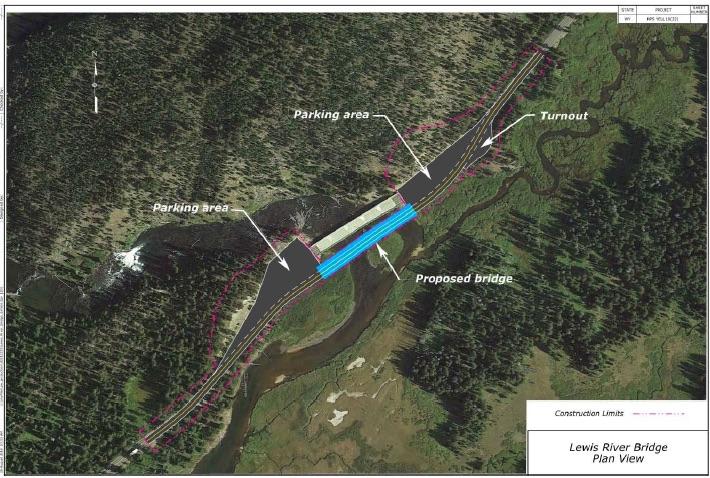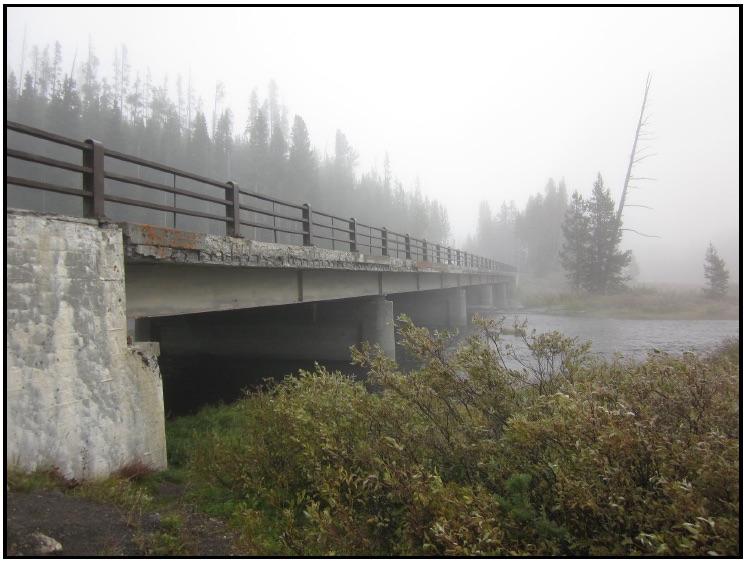
This graphic shows the location of the proposed Lewis River Bridge in relation to the existing bridge/NPS
If the Lewis River Bridge in Yellowstone National Park becomes too unsafe for traffic, the South Entrance to the park will essentially be a dead-end for tens of thousands of visitors, who instead would have to make an hours-long detour to reach one of the park's other entrances. That's the scenario the park staff has drawn in an environmental assessment calling for the 58-year-old steel-and-concrete span to be replaced.
A 2016 inspection of the bridge, which crosses the river near the popular Lewis River Falls, found that the "(S)tructure is seriously deficient or presents a safety hazard, but can remain in service at reduced loads or frequent inspections."
Without a new bridge, the EA said, the Park Service "would continue to complete short-term and periodic minor repairs and/or improvement activities for continued operation of the bridge, such as patching, rail maintenance, and repair of the deck. Deferring reconstruction would substantially increase the amount of maintenance to maintain the existing bridge. Deterioration of the structure would continue until safety concerns eventually caused closure or restricted use of the bridge."
The EA, which the public can comment on through November 30, does not estimate the cost of replacing the span. If scheduled, the project could begin in 2020 and end in 2022.
The proposal would include:
- Replace the bridge to a new alignment directly east of the existing bridge
- Reconstruct the road approaching the bridge to match the new alignment
- Reconstruct the parking area on the south side of the bridge
- Reconstruct the two pullouts on each side of the road on the north end of the bridge
- Improve the hydrology of the river by removing four bridge piers located in the river
As currently proposed, the project would also increase parking by about 10,000 square feet for visitors. That, along with realignment, would result in a loss of 2 acres of vegetation and topsoil, though the planners say that would be offset a bit by revegetation of some of the old road alignment.

The existing Lewis River Bridge, looking north/NPS
If the proposal is implemented, it's envisioned that the existing bridge would continue to carry traffic while a new bridge is built alongside it. After the new bridge is ready, the old span would be demolished.
Construction delays would normally be limited to 30 minutes. There may be some temporary road closures. These closures could consist of regular nighttime closures, and four to six daytime closures lasting from four to six hours each. Any night or day closures would be advertised in advance of occurring. Access to the overlook of the Lewis River Falls would be closed during the duration of the project.



Comments
Why not just do what many of our cities and states are doing?
Ignore it. Then when it collapses, apologize to families of victims and blame it all on previous administrations.